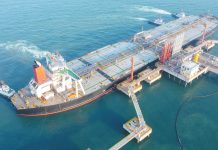LAHORE: “It’s no secret that the most pressing issue facing Pakistani agriculture today is water scarcity. So, how could we best adapt to local conditions, as well as turn this bottleneck, a national constraint, into an opportunity for development? Developing drought- and infertility-tolerant crops is imperative, and maize, as a global staple, is the perfect choice,” Professor Yuan Guobao, Chairman of the Hubei Technical Market Association, introduced to media just after the signing of the China-Pakistan Memorandum of Understanding on Cooperation in Maize Breeding and Industrialization Development on September 5.
The MoU was signed by Hubei University Modern Agricultural Innovation Research Institute, China, Hubei D-Gene Seed Incorporated Company, China, Patron Seeds (Pvt) Ltd, Multan and Department of Plant Breeding & Genetics, University of the Punjab, with focus on biotechnology breeding, seed production and processing, demonstration and promotion, and industrial development of maize.
According to official data, Pakistan’s average corn yield over the five years from 2020/21 to 2025/06 was around 6.09 tons per hectare. “As for China, our average maize yield is currently about 8-10 tons per hectare. If high-quality varieties are planted in areas with good fertility and water resources, the yield can reach as high as 12-15 tons per hectare. Therefore, there is huge potential for increasing maize production in Pakistan,” Yuan told. Yuan, who has visited Pakistan more than 30 times and has a deep understanding of the local climate, soil and hydrological conditions, expressed that China, as a country with a large population and livestock industry, still needs to import 20-30 million tons of maize each year. Pakistan, with huge agricultural potential, can achieve a 30-50% increase in maize production by combining good varieties and good methods. “To have a good harvest, you first need good land. Recent local research has revealed a large amount of saline-alkali land along the Indian Ocean coast. According to Pakistani data, the area is approximately 10 million hectares,” Yuan pointed out.
“Besides, some areas have formed secondary saline-alkali land due to improper fertilization. Therefore, we need first remediate saline-alkali land according to requirements. China has extensive experience in this area and is well-suited to comprehensive remediation using a combination of engineering and biological measures.” –Agencies






